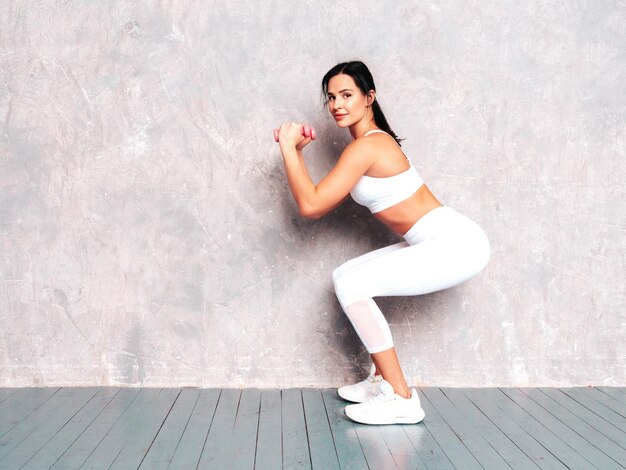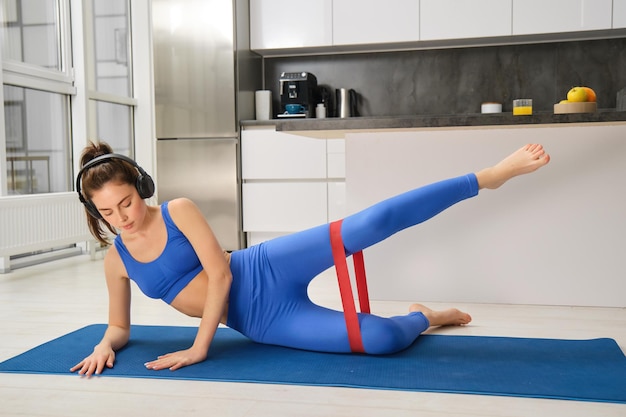Front squats are a key part of many strength training and conditioning programs. They鈥檙e a versatile exercise that can help you build strength, power, and muscle mass. Let鈥檚 break down how they work, the benefits, and some variations you can try.
What Are Front Squats?
Front squats are a version of the classic squat, but with the barbell held at chest level on the front part of the shoulders, unlike the back squat where the barbell is placed across the back. This change in bar placement requires a different grip, either a “clean grip” or a “cross-arm grip,” to keep the bar stable.
This front load shifts how your body moves and which muscles get worked. Front squats put a big emphasis on the quadriceps (the front thigh muscles). Because the weight is in front, you need to keep your torso more upright, which also makes your core work harder to keep you balanced and stable.
Doing front squats can improve mobility in your wrists, shoulders, and hips, and they also help strengthen the upper back. This need to stay upright strengthens the muscles that support your spine, which can help with overall posture.
Front squats are great for building lower body strength, improving posture, enhancing core stability, and boosting athletic performance.
How to Do Front Squats
Here鈥檚 a step-by-step guide to performing front squats correctly:
1. Starting Position: Stand with your feet shoulder-width apart, or a bit wider for balance. Rest the barbell across your front shoulders, using either a clean grip (fingers under the bar with elbows high) or a cross-arm grip.
2. Begin the Descent: Start by bending your hips, knees, and ankles like you鈥檙e going to sit back into a chair. Keep the weight on your heels to prevent tipping forward.
3. Lower Your Body: Go down until your thighs are at least parallel to the floor, or lower if you can. Keep your core tight and your torso as upright as possible.
4. Rise Up: Push through your heels to extend your hips and knees, coming back up in a smooth, controlled motion. Use the strength of your quadriceps, glutes, and hamstrings.
5. Finish the Lift: Return to the starting position, ready for another rep or to safely rack the barbell. Check your posture and grip before continuing.
Maintain Proper Posture: Keep your back straight and preserve its natural curve to protect your spine. Ensure your knees are aligned with your feet, not extending past your toes.
Core Engagement: Keep your abs tight and braced throughout to stabilize your torso and protect your lower back.
Muscles Worked in Front Squats
Front squats are a compound exercise, meaning they engage several muscle groups at once:
1. Hip Extension: Includes muscles like the gluteus maximus, hamstrings (biceps femoris, semimembranosus, semitendinosus), and part of the adductor magnus.
2. Hip Adduction: Muscles involved are the pectineus, adductors (short, long, and great), and gracilis.
3. Knee Extension: Primarily the quadriceps femoris.
4. Plantar Flexion: Includes the gastrocnemius, soleus, peroneus brevis, flexor digitorum longus, posterior tibialis, flexor hallucis longus, and peroneus longus.
Additionally, stabilizing muscles throughout your spine, shoulders, knees, wrists, hips, ankles, and feet help maintain posture and balance.
Variations of Front Squats
Front squats can be adapted in many ways to fit different goals and skill levels:
– Dumbbell Front Squats: Holding a dumbbell in each hand at shoulder height not only works your lower body but also makes your upper body work harder to stabilize the weights. It鈥檚 great for improving grip strength and upper body endurance.
– Kettlebell Front Squats: Holding a kettlebell at chest height requires more core engagement and balance due to the kettlebell鈥檚 unique shape. This variation adds a dynamic and functional element to your workout.
– Single-leg Front Squats (Pistol Squats): Doing squats on one leg increases the challenge for your quadriceps and glutes and also tests your balance, flexibility, and overall strength. It鈥檚 perfect for athletes or anyone wanting to improve unilateral strength.
Experiment Your Way: Try out these variations to see which suits your goals and abilities best. Always prioritize proper form to avoid injury and get the most benefit. Consulting with a fitness professional can help you perform these variations correctly and safely.
The Bottom Line
Front squats are a robust exercise for enhancing strength, power, and muscle mass. By understanding the movement mechanics and the muscles involved, you can perfect your technique and maximize your workouts. Always focus on maintaining good form over lifting heavier weights to minimize injury risk and maximize effectiveness.







